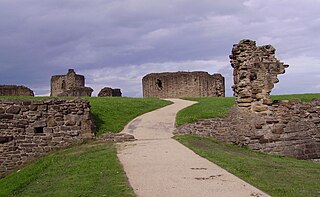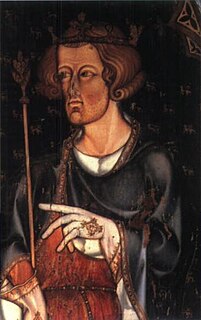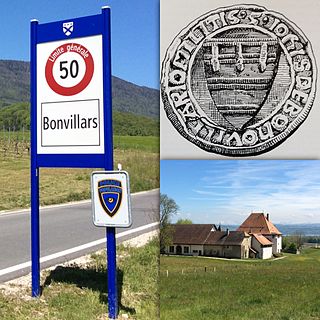

Guillaume de Cicon appears in the English archives variously as; Cykun, Cycons, Chycun, Sicoms, Sicun, Sycun.
From Vanclans, 24 kilometres north of Pontarlier in the Jura. Introduced to King Edwards service by Otto de Grandson.
An ancestor of Cicon’s had been with the Fourth Crusade that had sacked Constantinople in 1204, one Othon de Cicon. Othon de Cicon had accompanied his uncle Othon de la Roche (who became Duc d’Athènes and built a Frankish tower atop the Acropolis) on the fourth crusade, and became lord of Karystos from 1250 (at least) to his death around 1266. [1] Guillaume de Cicon’s first arrival in the English record of 13th November 1276 follows closely on the heels of the recapture of Karystos by the Byzantines under Licario also in 1276. [2]
First mentioned 13 November 1276 when he comes to England with a message from Otto de Grandson to King Edward I. [3] With the army in South Wales in 1277. Constable of Rhuddlan Castle [4] between February 1282 and May 1284 including the period of the Siege of Rhuddlan. First Constable of Conwy Castle from its construction until his death in 1310 or 1311. [5]
His appointment at Conwy Castle was recorded
“The king has committed in like manner to William de Cycun [Guillaume de Cicon], the castle of Aberconewey [Conwy], with the armour, etc, and has granted to him 190 livres yearly for the custody thereof, to be received as above, on condition that he shall have continuously have in garrison, in addition to himself and his household, at his cost thirty fencible men, of whom fifteen shall be crossbowmen one chaplain, one artiller, a carpenter, a mason and a smith, and of the others shall be made janitors, watchmen and other ministers of the castle. Order is given to all bailiffs etc (as above).” [6]
In the winter of 1294-5 Cicon held Conwy Castle alongside King Edward I whilst under siege during the rebellion of Madog ap Llywelyn. [7]

Master James of Saint George, ,, , was a master of works/architect from Savoy, described by historian Marc Morris as "one of the greatest architects of the European Middle Ages". He was largely responsible for designing King Edward I's castles in North Wales, including Conwy, Harlech and Caernarfon and Beaumaris on Anglesey.

Conwy Castle is a fortification in Conwy, located in North Wales. It was built by Edward I, during his conquest of Wales, between 1283 and 1289. Constructed as part of a wider project to create the walled town of Conwy, the combined defences cost around £15,000, a huge sum for the period. Over the next few centuries, the castle played an important part in several wars. It withstood the siege of Madog ap Llywelyn in the winter of 1294–95, acted as a temporary haven for Richard II in 1399 and was held for several months by forces loyal to Owain Glyndŵr in 1401.

The Treaty of Aberconwy was signed on the 10th of November 1277, the treaty was by King Edward I of England and Llewelyn the Last, Prince of Wales, following Edward’s invasion of Llewelyn’s territories earlier that year. The treaty granted peace between the two but also essentially guaranteed that Welsh self-rule would end upon Llewelyn's death and represented the completion of the first stage of the Conquest of Wales by Edward I.
Madog ap Llywelyn was the leader of the Welsh revolt of 1294–95 against English rule. The revolt was surpassed in longevity only by the revolt of Owain Glyndŵr in the 15th century. Madog belonged to a junior branch of the House of Aberffraw and was a distant relation of Llywelyn ap Gruffudd, the last recognised native Prince of Wales.

Flint Castle in Flint, Flintshire, was the first of a series of castles built during King Edward I's campaign to conquer Wales.

Rhuddlan Castle is a castle located in Rhuddlan, Denbighshire, Wales. It was erected by Edward I in 1277, following the First Welsh War.

Wales in the Late Middle Ages spanned the years 1250-1500, those years covered the period involving the closure of Welsh medieval royal houses during the late 13th century, and Wales' final ruler of the House of Aberffraw, the Welsh Prince Llywelyn II, also the era of the House of Plantagenet from England, specifically the male line descendants of Geoffrey Plantagenet, Count of Anjou as an ancestor of one of the Angevin kings of England who would go on to form the House of Tudor from England and Wales.

The Castles and Town Walls of King Edward in Gwynedd is a UNESCO-designated World Heritage Site located in Gwynedd, Wales. It includes the castles of Beaumaris and Harlech and the castles and town walls of Caernarfon and Conwy. UNESCO considers the sites to be the "finest examples of late 13th century and early 14th century military architecture in Europe".

Otto de Grandson, sometimes numbered Otto I to distinguish him from later members of his family with the same name, was the most prominent of the Savoyard knights in the service of King Edward I of England, to whom he was the closest personal friend and many of whose interests he shared.

Vanclans is a former commune in the Doubs department in the Bourgogne-Franche-Comté region in eastern France.
The Justiciar of North Wales was a legal office concerned with the government of the three counties in north-west Wales during the medieval period. Justiciar was a title which had been given to one of the monarch's chief ministers in both England and Scotland. Following Edward I of England's conquest of North Wales (1277–1283), the counties of Anglesey, Caernarfonshire and Merioneth were created out of the Kingdom of Gwynedd by the Statute of Rhuddlan in 1284 and placed under direct royal control. The Justiciar of North Wales was responsible for the royal administration in these counties as well as the administration of justice. English law was applied to criminal law, but in other matters Welsh law was allowed to continue.

Caernarfon Castle – often anglicised as Carnarvon Castle or Caernarvon Castle – is a medieval fortress in Caernarfon, Gwynedd, north-west Wales cared for by Cadw, the Welsh Government's historic environment service. It was a motte-and-bailey castle from the late 11th century until 1283 when King Edward I of England began to replace it with the current stone structure. The Edwardian town and castle acted as the administrative centre of north Wales, and as a result the defences were built on a grand scale. There was a deliberate link with Caernarfon's Roman past, and the Roman fort of Segontium is nearby.

Chenaux Castle is a castle in the municipality of Estavayer-le-Lac of the Canton of Fribourg in Switzerland. It is a Swiss heritage site of national significance.

The conquest of Wales by Edward I, sometimes referred to as the Edwardian Conquest of Wales, to distinguish it from the earlier Norman conquest of Wales, took place between 1277 and 1283. It resulted in the defeat and annexation of the Principality of Wales, and the other last remaining independent Welsh principalities, by Edward I, King of England.
Othon de Cicon was a Frankish noble and baron of Karystos on the island of Euboea (Negroponte) in medieval Greece.

Walter de Huntercombe, 1st Baron Huntercombe (1247–1313) was an English military commander during the Wars of Scottish Independence and a Governor of Edinburgh Castle.
The Ghisi family was a Venetian noble family, originally from Padua or Aquileia. Following the establishment of Crusader states in Greece after the Fourth Crusade, the Ghisi became an important dynasty there. Andrea Ghisi became lord of the islands of Tinos and Mykonos, while his brother Geremia Ghisi became ruler of Skopelos, Skiathos, and Skyros. Later members of the family were also active in the Principality of Achaea and the Triarchy of Negroponte.

Sir John de Bonvillars (c. ?–1287) was a medieval Savoyard knight in the service of Edward I. He was the brother in law of Otto de Grandson, and like William de Cicon, had been introduced to English service by Otto.

Edward I of England was associated with a faction of nobles and knights who came from the County of Savoy, and were favoured in England. Savoy became linked to the Plantaganet monarchy of England with the marriage of Edward I's parents Henry III of England and Eleanor of Provence in 1236. Eleanor of Provence was the daughter of Beatrice of Savoy.

Pierre de Champvent was a noble originally from Savoy who made a career as a military and courtier in England.